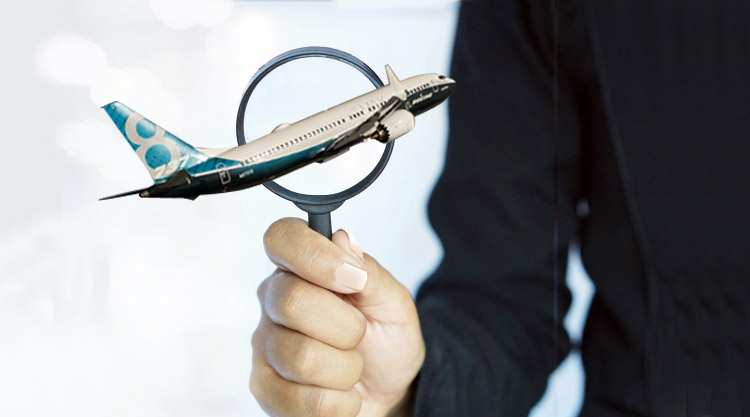Ethiopian crash re-opens fears about the safety of Boeing 737 Max 8
Design changes to best-selling aircraft's suspect flight control system to be implemented by April

Boeing's fastest-selling aircraft ever, the 737 Max 8 is under intense scrutiny following the horrific March 10 Ethiopian crash which killed all 157 persons on board. China, Singapore, Indonesia, Australia and Cayman Islands have grounded the aircraft while India has directed a slew of safety measures for operators.
Some analysts reckon that the Max 8 crash - the second in less than five months - has imposed a full blown crisis on Boeing. The disaster has thrown up fears over whether this best-selling aircraft is safe to fly. This has emerged as the biggest global air safety talking point in decades.
An estimated 350 Boeing 737 Max 8 aircraft are in operation worldwide with 54 airlines since their introduction in 2017. More than 5,000 are on order by 100 airlines.
While crash investigations have not yielded conclusive evidence yet about the cause of the crashes, the spotlight is on a suspect flight control system which is intended to prevent the aircraft from stalling. The automated system is feared to be creating "anomalies", which are suspected to have induced disastrous nose dives in both the Lion Air flight which crashed into the Java Sea killing all 189 persons on board on October 29, 2018, and the Ethiopian crash two days ago.
Certain similarities in the two crashes have fuelled the suspicion. Both were new planes which crashed shortly after take-off in good weather following sharp fluctuations in altitudes, and pilots reporting problems.

A preliminary report on the Lion Air crash gives currency to the theory that pilots were unable to recover from problems created by a malfunctioning automated system ironically meant to ensure safety. Pilots unions later complained that details of the system were not included in the aircraft manual.
Following the Lion Air crash, the US Federal Aviation Administrator(FAA) sent out "emergency Airworthiness Directive to advise carriers and pilots on training to disengage the aircraft's automated controls if there are anomalies". But this re-training was not mandatory.
"This investigation has just begun and to date we have not been provided data to draw any conclusions or take any actions," the FAA stated in a Continued Airworthiness Notification after the Ethiopian crash, but declared that "design changes" to the 737 Max 8's "flight control system" would be implemented by April.
Boeing CEO Dennis Muilenburg on Monday told employees in a communication that the company is "fully supporting our customer and the investigation and providing technical assistance at the request and under the direction of the U.S. National Transportation Safety Board and Ethiopian authorities".
"Though many questions remain at this time, we're committed to understanding all aspects of this accident," Muilenburg stated.
In India, Jet Airways and Spicejet are operating the Max 8. Jet is operating 5 and Spicejet 11 of these aircraft. The Director-General of Civil Aviation (DGCA) has directed that the 737 Max 8 be flown only by an experienced crew, with the commander having flown over 1,000 hours and the co-pilot at least 500 hours. The DGCA said it was in discussion with regulators of other countries and indicated that it is likely to follow the lead of the US FAA. It has also sought "stringent checks" on the autopilot and fly-by-wire system.
After the Lion Air crash last year, the Indian regulator had directed operators of the Boeing 737 Max 8 to re-train pilots and replicate the Lion Air crash scenario on simulators.





